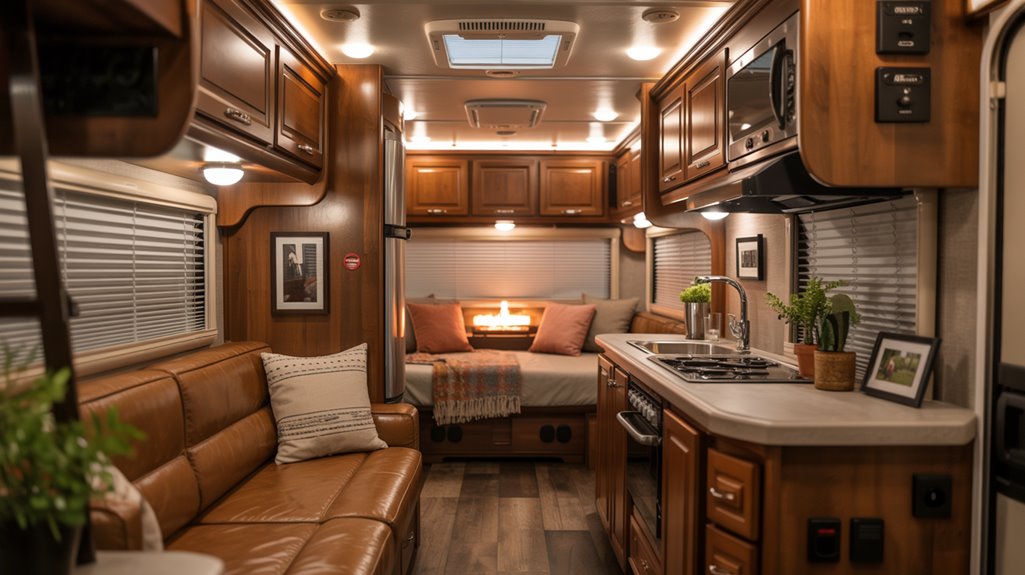As you lace up for summer adventures, think of your footwear as the unsung hero of your journey. Are you tackling rugged trails or breezy paths?
Hiking boots provide sturdy support and rugged traction for uneven ground, while trail runners keep things light and breezy for smoother routes.
The choice can make or break your hiking experience. So, what factors should you weigh to guarantee your feet are ready for the terrain ahead?
Contents
- 1 Weight Comparison: Hiking Boots vs. Trail Runners
- 2 Traction and Grip: What to Consider
- 3 Comfort Levels: Which Offers More?
- 4 Durability and Lifespan of Footwear
- 5 Terrain Suitability: Choosing the Right Option
- 6 Design and Materials: Key Differences
- 7 User Needs: Ankle Support and Foot Shape
- 8 Cost Analysis: Long-Term Investment
- 9 Weather Considerations: Which Performs Better?
Weight Comparison: Hiking Boots vs. Trail Runners

When you’re gearing up for your next hiking adventure, the choice between hiking boots and trail runners can significantly impact your experience, especially regarding weight.
Hiking boots typically weigh more due to their sturdy construction, while trail runners can save you up to 40% in weight.
This reduction improves your energy efficiency, making long hikes feel less tiresome. Trail runners dry faster than boots, allowing you to stay comfortable even after wet conditions.
Traction and Grip: What to Consider
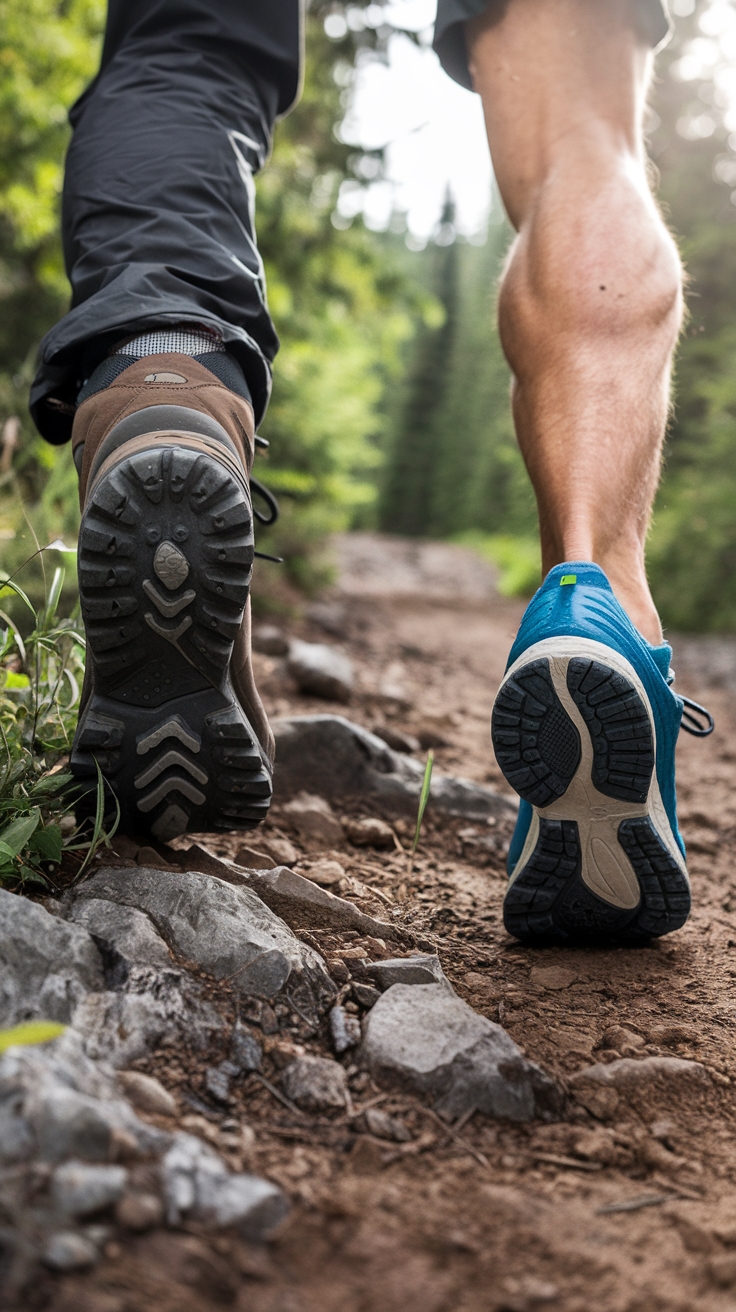
In terms of traction and grip, hiking boots generally take the lead with their thick lugs, designed for rough and rocky terrains. They provide superior grip across various surfaces, ensuring stability even as the ground gets sketchy.
On the other hand, light trail runners may offer minimal grip, though rugged options can compete with boots.
Some trail runners feature sticky rubber for wet conditions, but their grip can falter at slower paces. If you’re tackling diverse terrains, prioritize hiking boots for consistent traction.
SEE THIS: 15 Cute & Comfy Summer Hiking Outfits That’ll Make You Want to Hit the Trail ASAP.
Comfort Levels: Which Offers More?
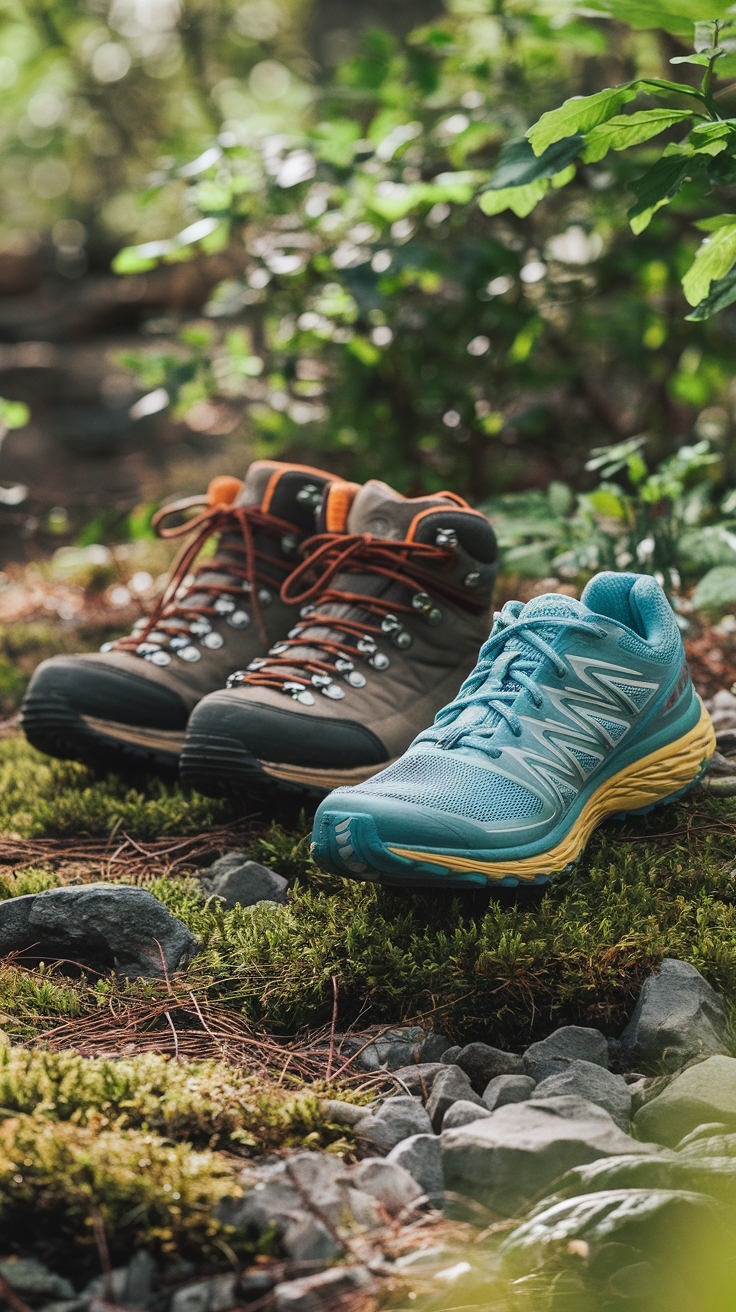
Choosing the right footwear for your hiking adventures often boils down to comfort, and this is where trail runners shine in comparison to hiking boots.
Trail runners are typically lighter, which means each pound saved translates to less strain on your back. Plus, they require little to no break-in time, allowing you to hit the trails right away without the discomfort that often comes with new hiking shoes or boots.
The EVA foam in trail runners offers superior cushioning, enhancing overall comfort. Additionally, their wider toe boxes cater to those with broader feet, promoting better fit.
SEE THIS: Aesthetic Hiking Trails & Destinations Ideas to Try This Season.
Durability and Lifespan of Footwear

While you might prioritize comfort when selecting your hiking footwear, durability and lifespan are equally essential elements to contemplate.
Hiking boots generally outlast trail runners, often enduring thousands of miles with proper care. Their robust materials, like leather, combined with resoling options, can significantly extend their life.
In fact, boots are built for longevity, often lasting through multiple hiking seasons when maintained properly.
In contrast, trail runners usually need replacement after about 500 miles due to their lighter construction, which, while enhancing energy efficiency, sacrifices durability.
SEE THIS: Feminine Survival Guide to Backpacking in the Wild.
Terrain Suitability: Choosing the Right Option
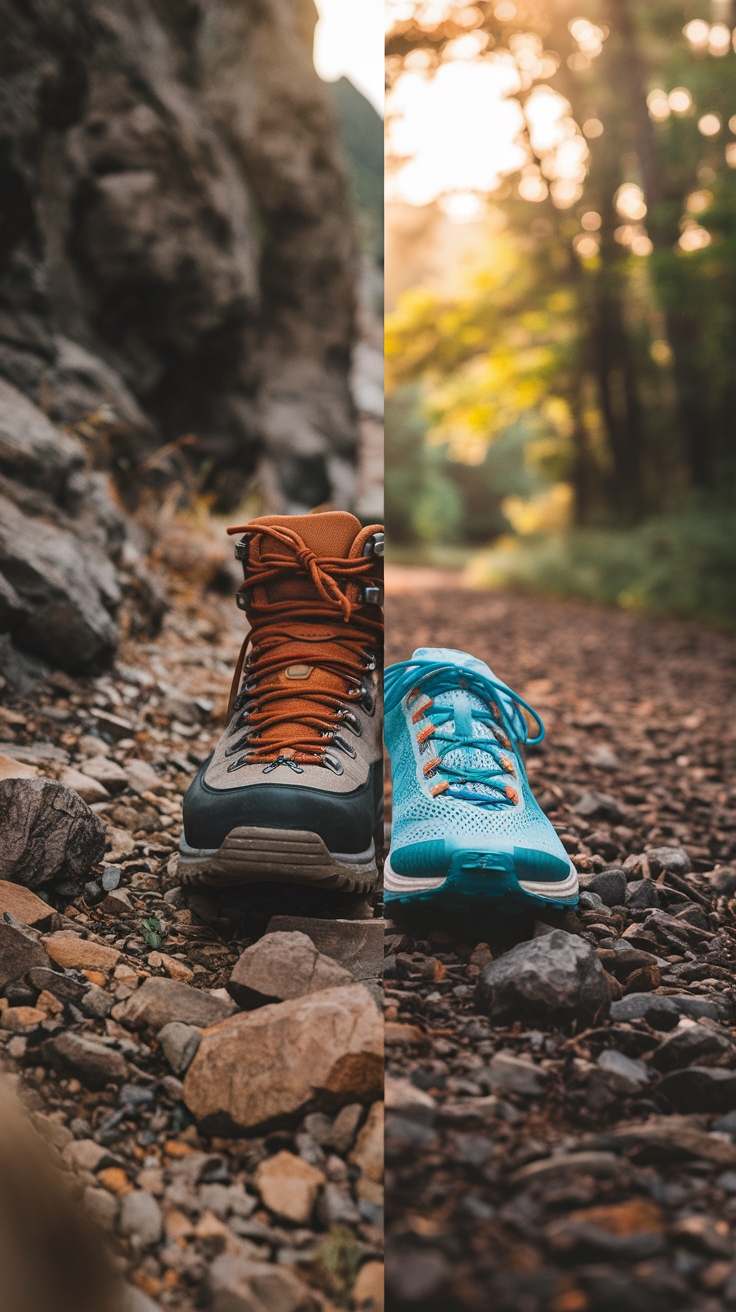
As far as hitting the trails is concerned, selecting the right footwear goes beyond just durability; it’s about matching your shoes to the terrain you’ll be tackling.
If you’re hiking on smooth, well-maintained trails, trail runners are your best bet. They’re lightweight and breathable, helping you cover ground quickly while minimizing fatigue.
However, if your journey leads you over rugged, uneven terrain, hiking boots provide the support and protection you need. They stabilize your ankles and cushion against rough impacts, vital for carrying heavier loads.
In wet or muddy conditions, boots shine with their waterproofing and improved grip. Ultimately, choose footwear that aligns with the terrain, ensuring comfort and safety on your adventures.
Design and Materials: Key Differences
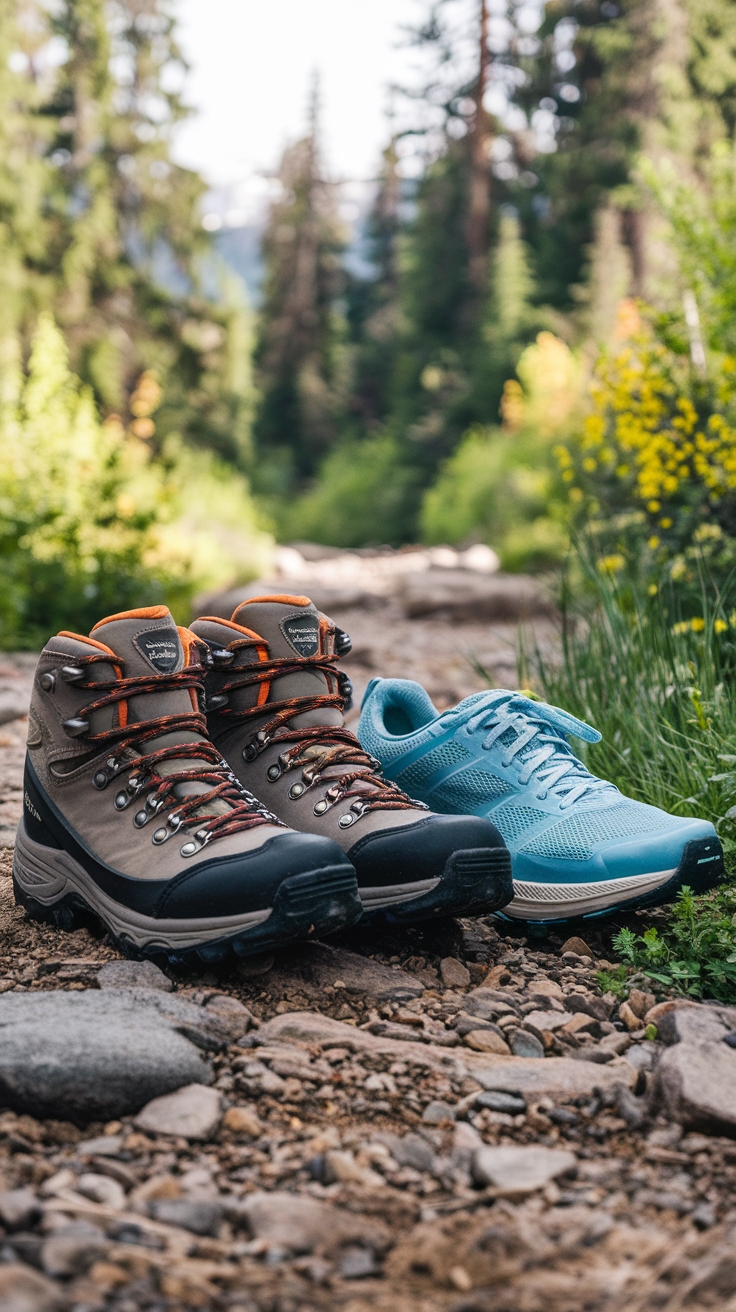
In terms of selecting the right footwear for your hiking adventures, understanding the design and materials behind hiking boots and trail runners can make all the difference.
Hiking boots typically feature durable leather or synthetic materials that provide robust protection and longevity, making them ideal for rugged terrains.
They often have deeper lugs for superior traction and may include waterproof membranes, though this can limit breathability.
In contrast, trail runners are lighter and more flexible, featuring breathable mesh uppers that improve comfort and speed.
User Needs: Ankle Support and Foot Shape

In terms of choosing the right footwear for your hiking adventures, understanding your own needs for ankle support and foot shape is vital.
If you’re tackling rough trails, hiking boots with a high ankle collar offer the stability you need. However, if you prefer a lighter option, trail runners provide flexibility at the cost of support. Torsional rigidity doesn’t only rely on height; the shoe’s stiffness plays an important role too.
Trail runners typically weigh 20-25 ounces per pair, making them a lightweight choice for those prioritizing speed and agility.
Your foot shape matters too—narrow feet need a snug fit, while wide feet benefit from a roomier toe box. If you have high arches or prior injuries, consider supportive insoles or boots. Prioritize comfort to guarantee a successful hiking experience.
Cost Analysis: Long-Term Investment
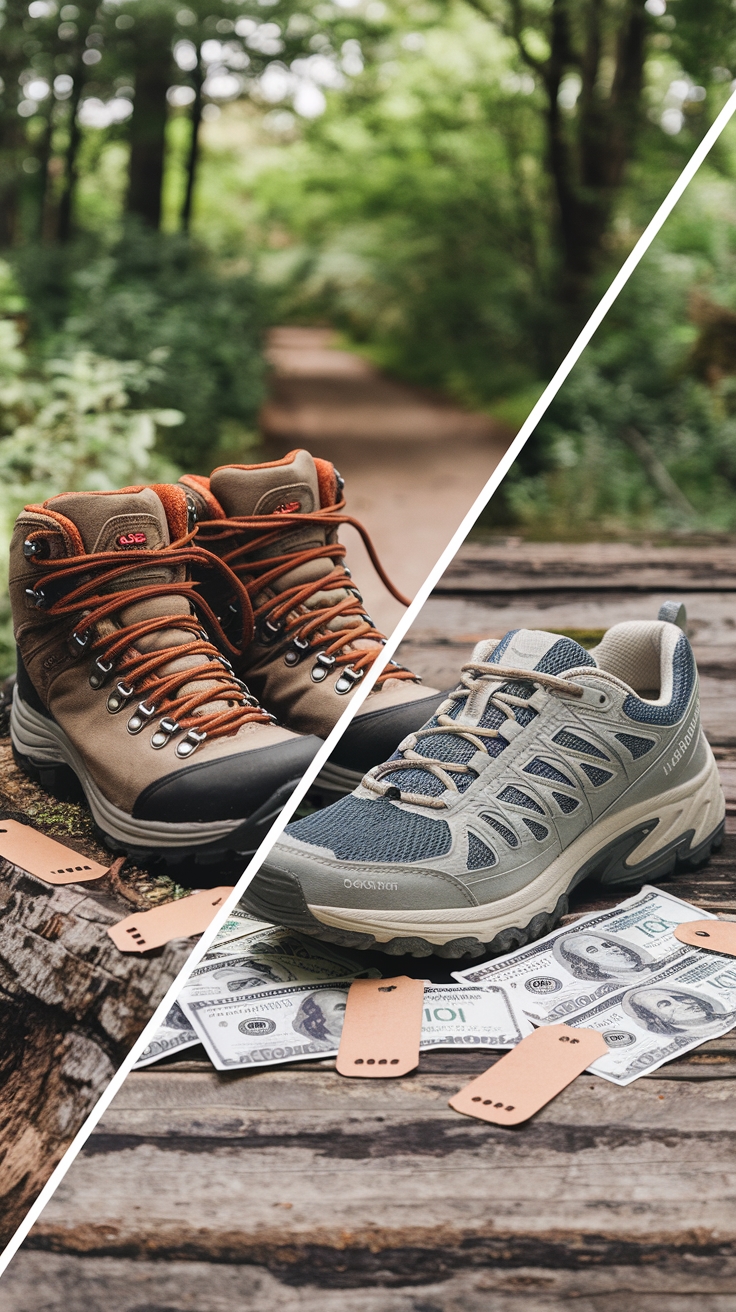
Choosing the right footwear isn’t just about immediate comfort; it’s also about understanding the long-term costs associated with your hiking choices.
While trail runners may seem appealing with their lower upfront price of $100 to $150, they typically wear out within a season, potentially costing you more annually if you hike frequently.
In contrast, hiking boots, priced from $150 to over $250, excel in durability and can last several years. This means that for regular hikers, boots can actually save money over time.
If you tackle rugged terrain, investing in quality boots not only guarantees better support but also reduces the need for frequent replacements, ultimately making them a wiser long-term choice for your hiking adventures.
Weather Considerations: Which Performs Better?
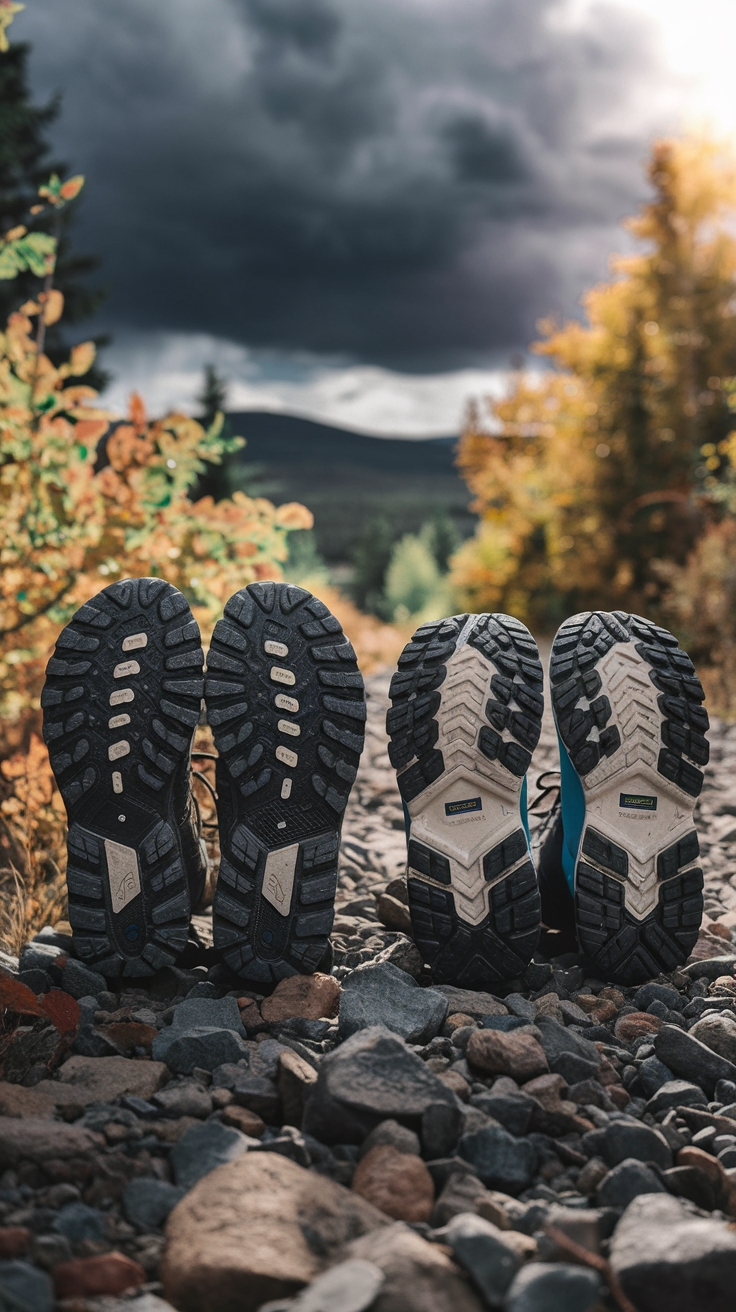
What matters most when you’re out on the trails: comfort, protection, or performance in changing weather conditions?
If you’re hiking in wet or cold environments, hiking boots with waterproof membranes and insulation are your best bet. They keep your feet dry and warm, essential for preventing frostbite.
On the other hand, if you’re tackling hot, dry trails, lightweight trail runners excel, offering breathability and quick drying. However, they can let water in during damp conditions, increasing the risk of wet feet. Trail runners are approximately 40% lighter than mid-cut hiking boots, which can significantly reduce fatigue on long hikes.
Waterproof trail runners exist, but they may sacrifice breathability. Ultimately, choose based on the weather you expect, balancing comfort and protection for a successful adventure.



